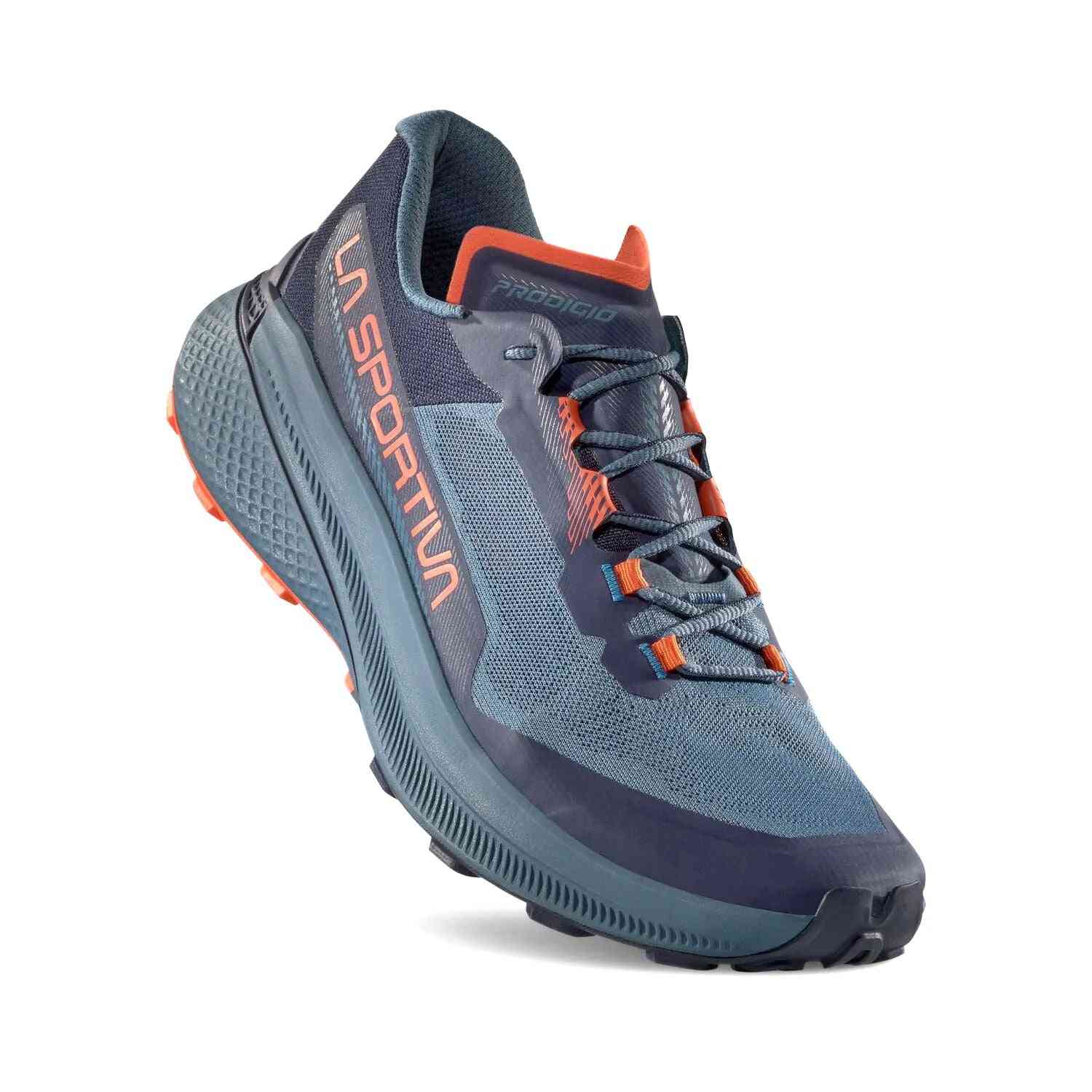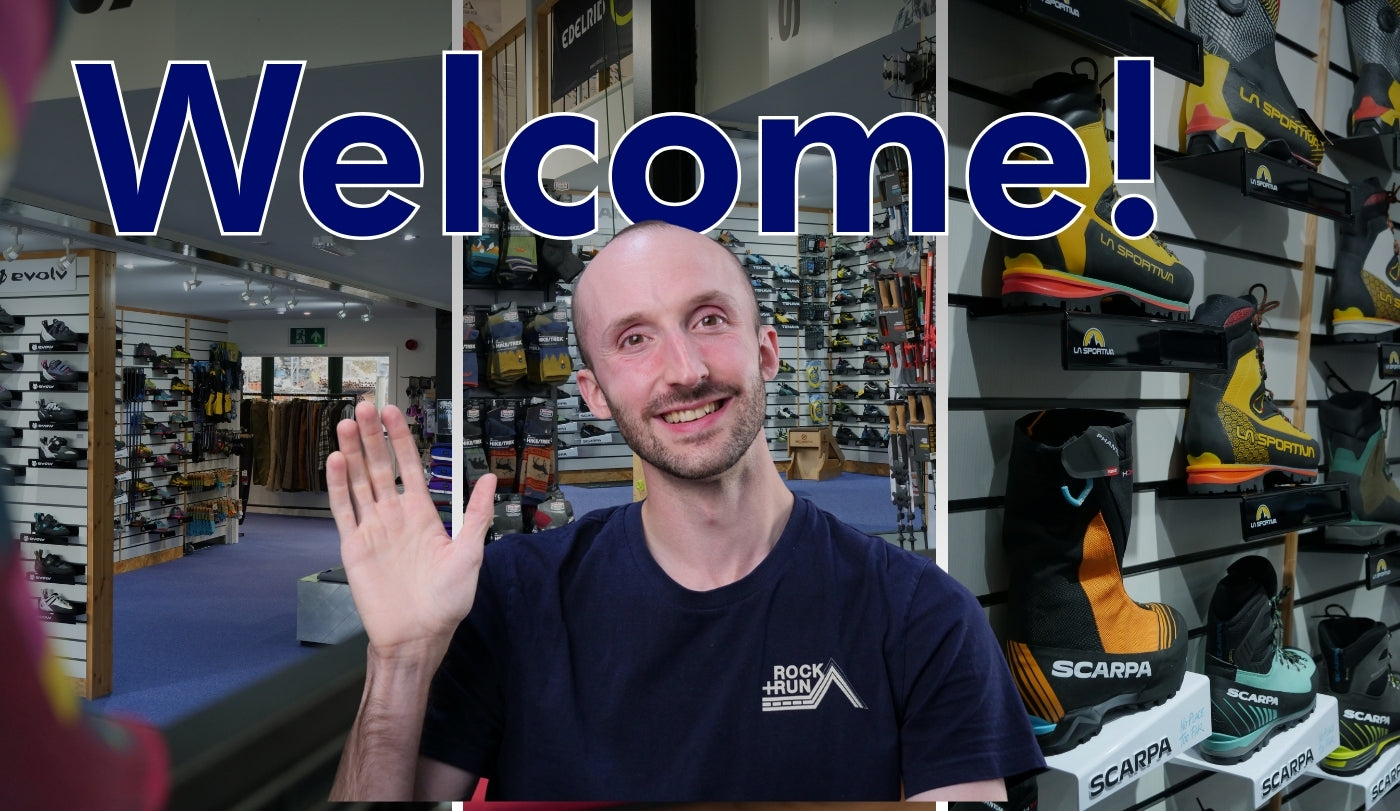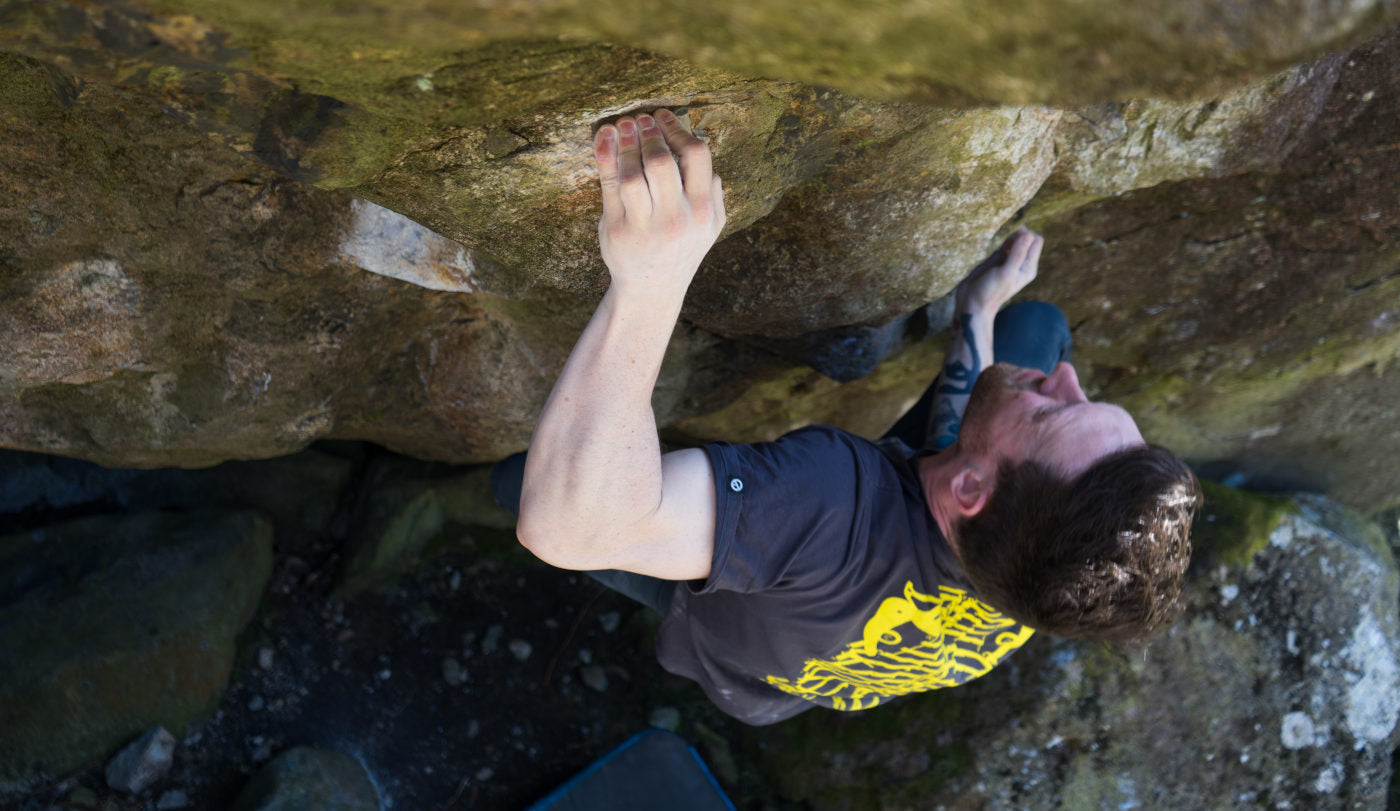By Tom Newberry
The Balkan Peninsula, Macedonia, isn't the first place you'd think of going on a bouldering trip, but if you are looking for granite blocks, situated in a rarely travelled corner of Europe, then Macedonia’s fourth largest city of Prilep, could be the place for you. Rich in culture, history and natural beauty Macedonia seems to pack in more than should be possible for a country of its size. Did you know Mother Teresa was born in Macedonia? Despite being one of the newest European countries, in many regards it feels as though time has stood still over the last four decades. Modern Volkswagens fight for road space against battered communist cars, donkeys pulling carts and drunken cyclists. It is here, in the depths of Eastern Europe, a somewhat different bouldering trip awaits.
Header image: Tom Newberry on a world class Anna Storr problem at the Dabnica Sector, Waves, 7C.
Dozens of villages scattered over the hills surrounding Prilep make up Macedonia’s largest extended community of 70,000 inhabitants. On these hills, criss-crossed with sheep trails, lie vast amounts of barely touched, sculptured granite blocks. From a distance the huge granite blocks portray many of the features seen in Bishop and Hampi. Although Prilep certainly isn’t the new Bishop, it does offer the same striking highballs. Many of the developed problems follow strong lines, wandering among the featured boulders you barely need the guidebook as you eye up arêtes, roofs, and distinct patina covered walls. The style is predominately crimpy and the coarse rock is far from forgiving, so looking after the fingers is essential. Fortunately, many of the problems are basic and easy to read, so be efficient. Furthermore flat, grassy landings protect most problems, requiring no more than one or two crash pads. With all the prerequisites, it seems the Prilep is destined to become a major bouldering venue in the not too distant future.
Locals first began climbing on the impressive granite boulders in 2003. But it wasn’t until 2009 when developments really kicked off. Slovenian climbers came armed with billhooks, sheers, and brushes of all sizes to explore the hillsides that overlooked the famous tobacco fields of Prilep. On hearing the rumours, Rok Shishernik led several trips with a strong team to open numerous new problems and scoped out new sectors. Over the following years, Prilep’s reputation grew and grew gaining the attention of many of the world’s best climbers, including the likes of Arnaud Petit, Kilian Fischhuber, Anna Stohr, Jason Kehl, Dave Graham and Paul Robinson; this perhaps lead to decision from Petzl to include Prilep as a destination on their renowned 2014 Petzl Roc Trip tour. Today, climbing in Prilep is expanding, turning the area into one of the world's most exciting places for bouldering. Yet, whilst traces of chalk are now a common sight, seeing anyone other than the local Sheppard is a rarity. The scope to develop new boulder problems and even areas is enormous. Strong Italian climber Nicky Ceria travelled to explore and add his own test pieces to the hills of Prilep stating: “this unknown bouldering destination leads to a small taste of exploration; its valleys are a perfect setting in which to climb, offering great stones, lush green grass and stunning sunsets”.
Currently Prilep’s guide covers five areas in detail. For most visiting climbers efforts should be concentrated across the three main hillsides of Kamena Baba, Dabinca and Treskvec. It is in these areas that the most compact circuits on the best rock can be found. Although, each area offers a differing range.
Above: Tom Bunn works the classic Zlatern Dab 8A, Dabnica Sector. Named after the locally brewed beer.
Kamena Baba should be the first port of call for most, being by far the most extensive hillside and home to most of Prilep’s more popular classics. Eight sub-sectors offer 257 problems from 5A/V0 to 8A/V11. Unfortunately, the best rock and problems are found in the furthest sectors from the road, nearer the top of the hillside. The steep 25 minute walk-in may sound pretty heinous, but this simply adds to the experience allowing you to really appreciate the spectacular location and superb views over both the tobacco fields and town below. As you contour round the boulder strewn hillside, your hands sweat and mind race at the sheer number of boulders on offer. Where do you start and which of the many lines on offer are the classics? For those wishing to explore more, the boundaries are limitless as the ridge line is riddled with boulders and continues for miles. Numerous high quality first ascents on virgin rock await those willing to carry a crash pad further than their predecessors.
Dabinca offers 61 problems from 5A/V0 to 8A+/V12. An accessible venue being compact and close to the car can make for a pleasant change; your legs will thank you. The fascinating drive along 3 kilometres of less than ideal track through the city outskirts displays Macedonia’s diverse range of wealth, living conditions and motor history. The area hosts a collection of exceptional problems on arguably the best rock in Prilep. Although the number of developed blocs is less than a quarter of that at Kamena Baba the quality here more than makes up for the lack of quantity. That said Dabinca has the best potential for putting up five star first ascents, with easy pickings for those willing to walk more than 15 minutes from the car.
Tresavec is one of the newest hillsides to be developed and currently offers 82 problems from 5A/V0 to 8A+/V12 across four established sectors, again with potential for a lot more. The main benefit of this area is that it is much higher than the rest making it a good option for hot days or an escape from low lying cloud. Be aware, the road does get cut off in snow. Once again the views are fantastic and the sunsets memorable. The developed problems are a little more hit and miss at Tresavec, with the rock quality varying greatly from boulder to boulder. Still, some of Prilep’s finest are hidden on this hillside and well worth seeking out. The ‘Monastery’ sector is the best place to start.
Top 10 Problems
- Wild Nothing 6C+, Treskavec. If one problem summed up Prilep bouldering; high, crimpy, amazing moves and a superb setting! The neighbouring arête, Golden Haze 7B, is also a Prilep crimpin’ classic.
- Kush Kaval 7A, Dabinca. A problem that screams to be climbed. Follow the rising line of large, juggy Heucos up to the centre of a proud house size boulder. A heart in mouth pop for the top means it won’t be forgotten quickly. 6C+ from standing.
- Cocon 7A, Kamena Baba. A rare and unusual sculpted feature, not often seen on granite. Bring your guns, it sure is burly! And don’t underestimate the inimitable top out.
- Babastic 7A+, Kamena Baba. If you could describe this problem in one word it would be BIG; BIG walk in, BIG boulder, BIG line, BIG moves and a BIG fall potential! Babastic is one of a trio of neighbouring highball 7A+s, which arguably make up the three best problems in Prilep.
- Pornic 7A+, Dabinca. The high and aesthetic arête is a “proper line”, with balancey, sequencey and technical climbing that may leave you either frustrated or elated.
- Marmelade 7B, Kamena Baba. A popular classic, despite being hard for the grade; it must be good! Two tactics can be utilised… brute strength or cunning trickery. Suits indoor climbers.
- Ni-Mus 7B, Kamena Baba. Smuggled over from Bishop. Seeking out this hidden gem is a must do for those operating at the grade. It’s a friendly on the skin too!
- Waves 7C, Dabinca. Wow! This featured granite wall seems unique to Macedonia. Perfectly sculpted, high quality granite. This boulder is more than worth making trip out for and will be the highlight of anyone’s trip.
- Excalibur 7C, Kamena Baba. - Some of the coolest moves around make this a guarantee for your all-time top 5 list. Stand start goes at a brilliant 6C+.
- Terrormeer 8A, Treskavec. Physical, Gymnastic yet precarious climbing on perfectly sculpted pinches up an impressive golden prow. Looks like it should be in Hampi.
Above: Callum Coldwell-Storry on the finishing jugs of the classic highball Wild Nothing, 6C+.
Useful Information
The local currency is the Macedonian Denar, although some places do accept Euros at a less favourable exchange rate. Money (£, $ or €) can be changed at the airport or in town. Climbing gear isn’t sold locally, so bring plenty of chalk, tape etc.
Season
The winter months provide the best conditions for those seeking out the harder classics and there is also the opportunity to make use of the nearby ski resort. However, expect snow and temperatures dropping to below 0° C. March/April and October/November offer the best compromise of sun and conditions. Summers in Macedonia are way too hot to boulder and there is very little shade amongst the boulders.
How to get there
Wizz-air offer cheap flights direct from several British airports to Macedonia’s capital, Skopje. Return flights from London Luton cost as little as £60. Hiring a car is recommended, be warned some of the tracks to the boulders are “bumpy”. Prilep is an hour and a half drive from the airport. All the bouldering areas are located to the north of the city no more than 10minutes drive from the city centre.
Where to stay and what to eat
Macedonia is very cheap! A basic hotel will cost around £8/night per person based on two or more sharing. Or you can book a bed in the Monastery at Treskavec for a small donation; this is a little more secluded being out of town but does have amazing views. Prilep also has lots of AirBnB hosts, which can be even cheaper. During the warmer months it is possible to camp on the farmer’s fields below the boulders, but there aren’t any proper facilities. Several bakeries offer good lunch options for less than 50p. Eating out expect to pay no more than £3 for a decent meal. The local beer, Zlatern Dab, costs under £1 for a large bottle. Rakia, a fruit brandy, is the spirit of choice in Macedonia and, at less than £1 a shot, should also be sampled.
















